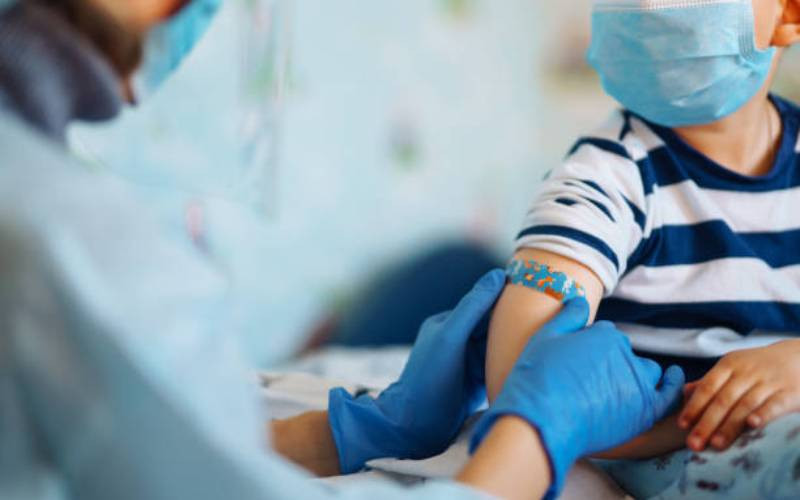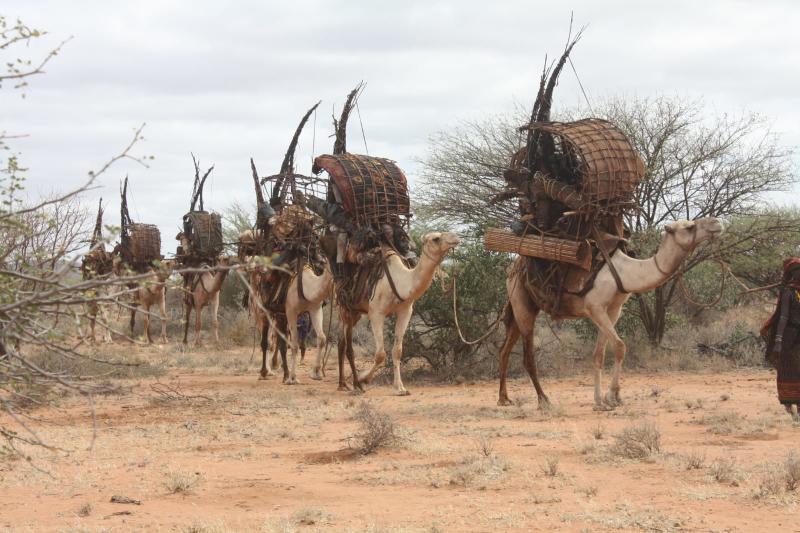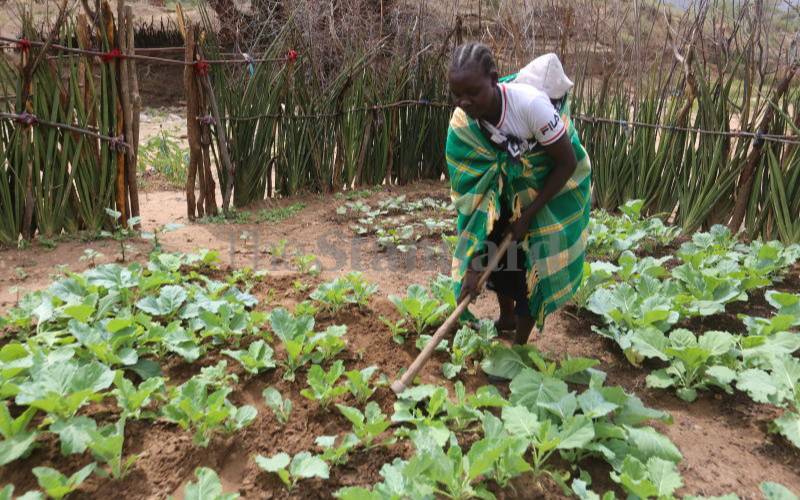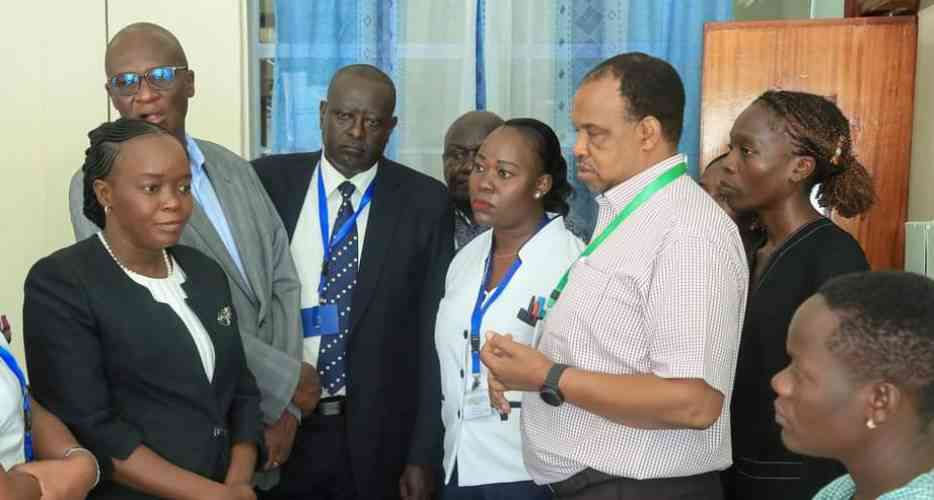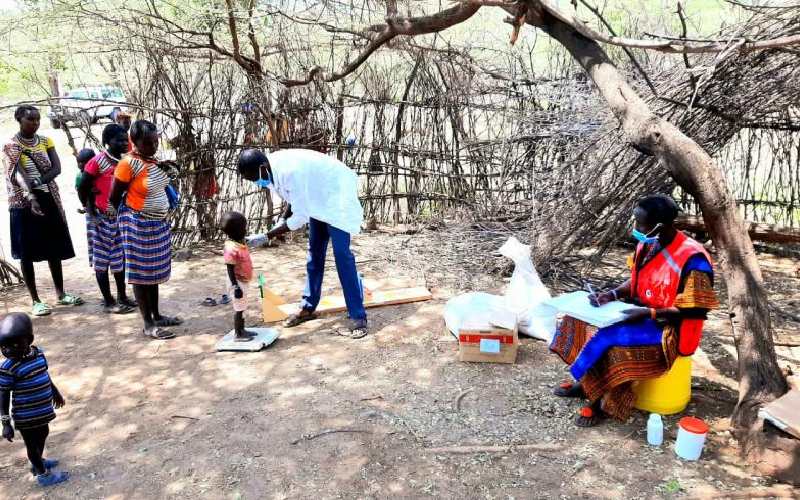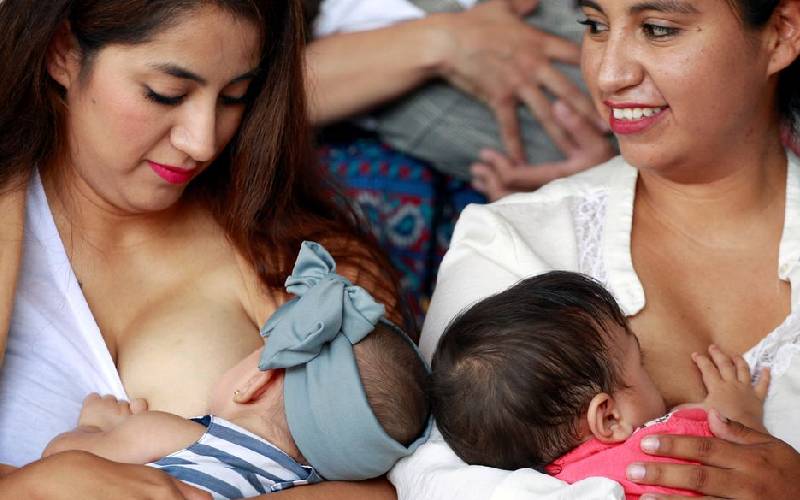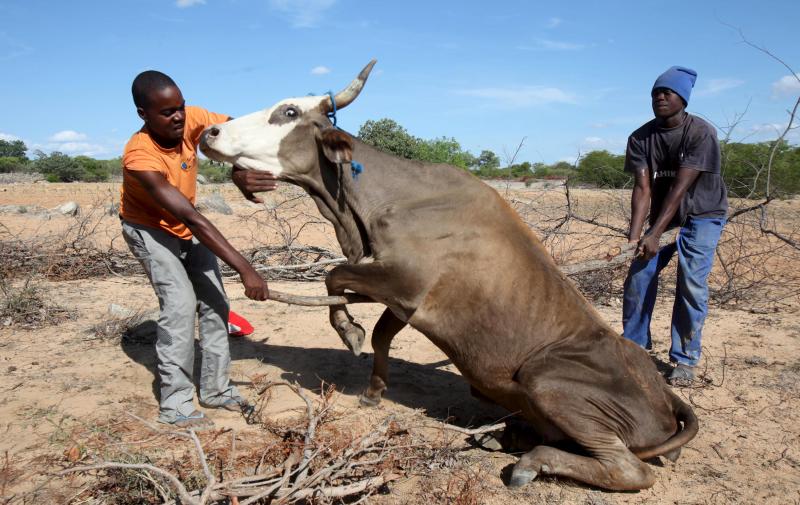
The drought in Marsabit in Northern Kenya has increased malnutrition levels to catastrophic levels.
As communities move in the desperate search for pastures and water, mothers and children battle starvation. As the livestock dwindles, so does breastmilk.
In the nomadic lifestyle, mothers and children have no say on where they will stay regardless of their living conditions. Their lives are determined by where pasture and water are available for their livestock.
They have to regularly follow their livestock so that they can access milk, meat, or sell their animals to buy food and non-food items.
Some of the areas worst hit by drought include Ileret North Horr and Laisamis where ravaging drought has killed thousands of livestock leaving vulnerable desperate families without livelihood support.
Hascar, a mother of eight from Illerent is a pastoralist. She has exhausted all options of borrowing food from her neighbours and her main source of income has been reduced to selling a home-brew made from yeast, sugar and water called 'Kada'.
But when there is no money for food, customers seeking alcohol are hard to come by.
With no money, no food, and starving children, Hascar has made a tough decision. She feeds her children the leftover alcohol instead of watching them go to sleep on empty bellies.
“This alcohol (Kada) is the backbone of our economy here. If we sell it we get food, if we don’t then that’s what we have. Then we wait for the next day hoping that things will get better, ” she says.
Hascar says Kada, served in cooking oil tins, helps her children sleep at night. It does the same for her neighbours' children. Her younger ones are below two years of age, with the youngest nine months old. The brew, bitter in taste, is all that's there to drink. However, the young ones hardly cringe on consumption, you'd think it was some soft drink.
“I know the alcohol will make them drunk and when drunk they can sleep or else they will cry of hunger the whole night. But what else can I feed them when I have nothing?” says Hascar, insisting she understands the dangers alcohol poses on children.
The National Drought Management Authority assessment report released early this year shows that at least 23 counties in Kenya face starvation.
The nutrition trend is worsening in Isiolo, Kajiado, Kwale, Mandera, Marsabit, Narok, Wajir and West Pokot counties, while Baringo, Kitui Lamu Makueni Samburu.
In Watalii Manyata, Illeret sub-county, children with sunken faces walk with empty tins with the hope of getting food or water.
Nakhur Oiso, a 26-year-old mother of seven, says when they had livestock, milk was available for their children. Even with the absence of cows, they could substitute with goat milk.
“The remaining goats were taken to Ethiopia so that we can exchange them for food. Now we have no livestock, so most of the time, we have a full meal once every two or three days. If I eat, my baby will have something to breastfeed, if not he will just bear like the rest,” says Nakhur.
The women here follow no specific diet for breastfeeding – they eat whatever is available, like food like meat, or tea–just to keep them alive.
For pregnant women, the situation is different in Loiyangalani. Children and women have resorted to eating roots growing in swampy areas.
After giving birth, they are given blood from animals and a soup made from sheep meat to regain energy and boost blood loss during delivery.
“When a pregnant mother gives birth, a goat is spiked at the neck where the main vein is, and the blood is harvested. The mother is fed blood for four days, after which a sheep is slaughtered for soup for the next four days,” explains Fatuma Galgalo, a pregnant mother of six.
Blood from animals is said to be rich in iron while the soup helps restore the mother's nutrients. With the ongoing drought, livestock is either wandering off to look for food or dying, depriving post-natal women of essential food.
According to Victoria Naperu, a community health volunteer in the Laisamis area, most women give birth at home.
“Most women here give birth at home, and one recently died after giving birth to twins alone – no one was there to help her and she bled to death. At the time of birth, this woman was weak, she had not eaten and the little blood she had, she bled out while giving birth,” she says.
On the other hand, pregnant women and lactating mothers in Laisamis have to walk long distances in search of water and food for their families as most of their men have left for the grazing fields.
“Most women here depend on relief food, which is mostly maize. The young ones cannot feed on maize because there are no posho mills in this area. Also, maize alone is not a balanced diet” adds Naperu.
On our way to North Horr, we meet women carrying jerrycans with children on their backs, waiting for water being donated by a local humanitarian organisation.
Mamabudho Ali Wario is one of the women queuing patiently for this water. She narrates to us that they had planned to walk 60 kilometres to the Ethiopian border to help a woman who had given birth earlier that morning.
“In our manyatta last night my neighbour gave birth and lost consciousness due to lack of water, so we discussed and had agreed to go to the Ethiopian border to fetch water but luckily aid arrived early and we helped her. No one had water and we couldn’t prepare any meal without water...and when we get water we can only afford one meal a day if lucky,” narrates Mabudho.
During these long walks, women of North Horr constituency are accompanied by their young ones whom they can't leave behind.
“The mother will just breastfeed their babies knowing there is no milk coming out just to stop them from crying from hunger. There is no breast milk if the mother hasn’t fed well,” adds Mamabudho.
While on the move, children are given porridge or tea but scantily so, during the day. They carry maize, beans, and flour which they get from relief distributions. Sometimes they feed on wild fruits. Occasionally, the men decide to slaughter an animal that they share among families.
They make a temporary makeshift home known as 'fora' where they stay for about a week before they move to the next station based on the availability of water and pasture for their animals.
These temporary settlements are infested with poisonous snakes, cold at night and lack proper amounts of food.
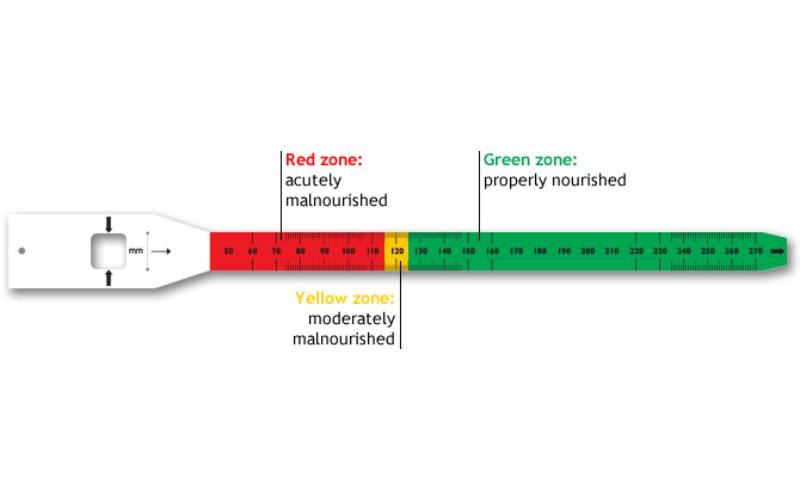
Pregnant and lactating mothers, most of the time, have no special food. They feed on whatever is available.
During drought, the milk is not enough to share, while the water available in the fora is too dirty to give to children. Fresh milk is given directly from the animal without pasteurising. The young ones on the move are given diluted goat milk, which is scarce.
Mohammed Sheriff, a community health worker in Hurr Hills, says drought has stretched out for over three years, and cases of malnutrition are exponentially increasing day by day.
“The malnutrition levels in this area are above 45 per cent, which is an emergency case that needs immediate intervention. There is no water, women have nothing to feed their children, and there are no medical supplies either. Even when we refer acute cases to hospitals, there is no ambulance. Not only children, but even adults are also malnourished and there is no help coming by, we are just waiting on God,” says Sheriff
Dellah Akumu, a nutrition officer working with Save the Children, says lack of knowledge of child caregiving practices and household food insecurity are the main drivers of malnutrition cases.
“When a child is facing malnutrition for a long time, the condition will become chronic and they will be shorter in height than their peers and shorter for their age,” says Akumu.
“Prolonged malnutrition will result in one having reduced intellectual capacity and the child will not be able to achieve what other people achieve economically, and will not also perform well in school.”
Akumu further adds that when a child is malnourished they are prone to other opportunistic diseases like tuberculosis.
“These children are at risk of dying. A child who is red on MUAC measurement is nine times more likely to die compared to a healthy baby. But even if the child survives acute malnutrition, when they grow up they become less productive cognitive-wise.”
Integrated Food Security Phase Classification (IPC) nutrition snapshot, coincides with a report released by Oxfam, where an estimated 3.1 million people, or 20 per cent of the population in Kenya, living in Arid and Semi-Arid Lands were living in acute food insecurity in February 2022. They are classified as emergency cases.
This is nearly a two-fold increase from 1.4 million in February 2022.
 The Standard Group Plc is a multi-media organization with investments in media platforms spanning newspaper print
operations, television, radio broadcasting, digital and online services. The Standard Group is recognized as a
leading multi-media house in Kenya with a key influence in matters of national and international interest.
The Standard Group Plc is a multi-media organization with investments in media platforms spanning newspaper print
operations, television, radio broadcasting, digital and online services. The Standard Group is recognized as a
leading multi-media house in Kenya with a key influence in matters of national and international interest.

